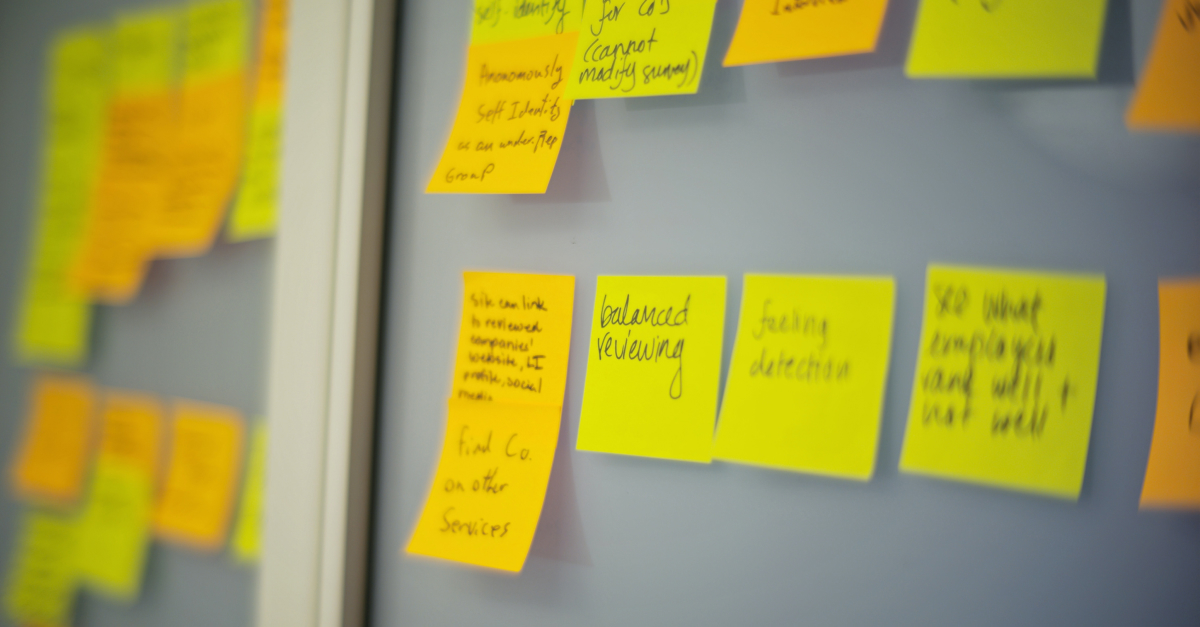
How to Improve the Employee Experience with Journey Mapping
As the world begins to open back up, businesses are rushing to fill positions and find great talent. With high unemployment rates across the country, many employers believe that rehiring will be easy or that we’re in an employer’s market similar to after the 2008 recession.
However, research shows that while unemployment rates remain high, job openings are also at unprecedented high levels. Not only that, but around one in five Americans have relocated because of the pandemic or know someone that has. In other words, employers may need to compete for high quality, newly dispersed talent regardless of how large the talent pool is.
Consumer expectations have also shifted due to changes brought on by the pandemic. More than 75 percent of consumers have experimented with their shopping behaviors, including trying new brands and places to shop.
Brand loyalty is no longer a major motivator for consumers, so re-opening businesses have both the opportunity to capture new attention as well as the challenge of keeping customers with wandering wallets.
Engaging your workforce to deliver great service
As the world begins to shift back to normalcy and mass hiring ensues, business leaders need to revisit their onboarding and employee engagement strategy.
Related: A Guide to Rebuild a Successful Nondesk Workforce
High employee engagement is often associated with higher productivity levels, higher retention rates, and improved loyalty. Research also shows that employee engagement is linked to customer satisfaction, brand reputation, and stakeholder value.
With a thorough employee engagement strategy, you’ll be able to confidently re-open business and deliver a great customer experience.
How to audit your employee experience
With unprecedented change caused by COVID-19, now’s the time to revisit old, outdated processes and improve experiences for the post-COVID world. Auditing your employee experience will help your business identify opportunities for efficiency, streamline processes, and set up employees for success on a mass scale.
Rebuilding the employee experience from scratch can seem like an overwhelming project, so start with the big picture. Build out personas to better understand your employees and use journey mapping to define the experience from hiring to ongoing engagement.
What is journey mapping?
Journey mapping is a tool to better understand a user’s experience by compiling a series of actions a persona goes through to accomplish a goal. Journey mapping the employee experience helps leaders better understand how their teams work and identify opportunities for improvement across the employee lifecycle.
.png?width=736&name=Konverse_employee%20journey%20(1).png) Try starting with these five milestones in the employee journey.
Try starting with these five milestones in the employee journey.
For best results, get input from team members across the organization. The way a frontline manager perceives the experience may be different than corporate leadership. These differences and similarities will help you build a clearer picture of both the current and ideal employee experience.
When building your journey map, consider these questions:
- What does it look like for an employee to go from being hired to being a productive and engaged team member?
- What touchpoints do your organization provide to new hires?
- How do new employees feel as they become acquainted with the business?
- How long does it take for a new hire to be a productive member of the team?
What are the bright spots and low points?
Bright spots are highlights or positive experiences throughout the journey.
For example, an employee considers their first day back to work to be a bright spot after months of facing unemployment during the pandemic.
Bright spots help operators understand how their employees are feeling, what processes are working, and can also inform how to improve other touchpoints.
Low points are the experiences related to negative emotions. Low points cannot always be preventable but can be mitigated with positive touchpoints.
For example, an employee might consider the onboarding process as a low point if it is overwhelming or confusing.
Clear communication and support from a manager can improve this experience.
Highlight your strengths. Improve your weaknesses.
With a clearer picture of the employee experience, your team can prioritize the communications and processes that will have the greatest impact on the business if improved.
Ask yourself:
- How can I take advantage of and extend bright spots?
- Are there common themes behind these bright spots that I can make repeatable?
- How can I improve low points with better communication? With new technology?
- How are my low points impacting the bottom line?
- What ROI can I bring by improving low points?
Download our free guide to rebuild your nondesk workforce, complete with a journey mapping activity.
Tech ties the journey together
Journey maps are a great way to identify blind spots in the employee journey. Employers should implement the communication and tools employees need to improve the journey. The right technology platform can smooth out the onboarding, training, and engagement processes by operationalizing and automating key communications, resources, and paperwork.
Konverse is an all-in-one communication hub designed for nondesk staff. Its interface allows new employees to access vital information from their personal devices along the employee journey and includes onboarding, training, knowledge centers, intranet features, and more.
Talk to an expert to learn how Konverse can unite your deskless workforce.

